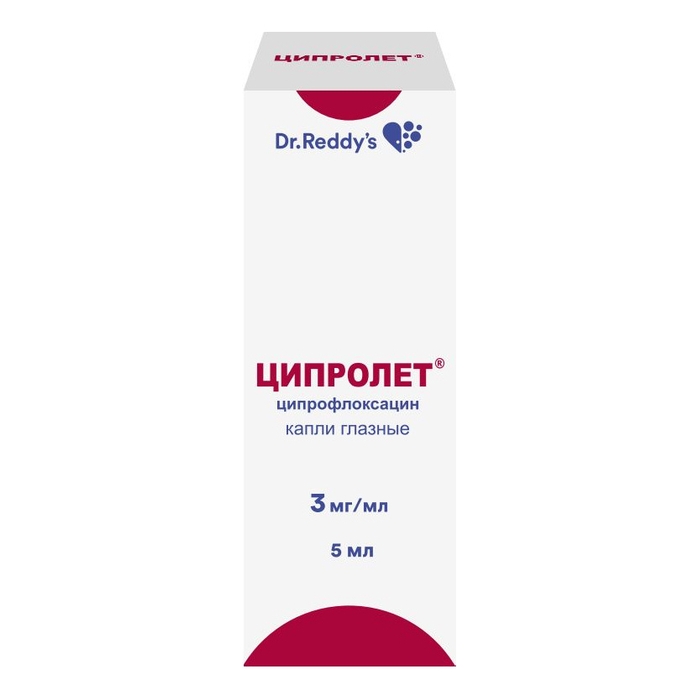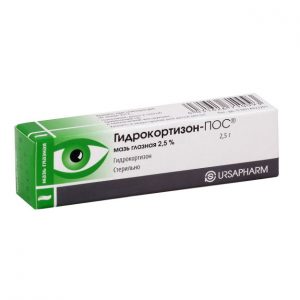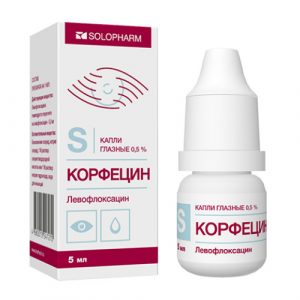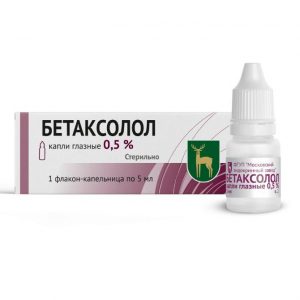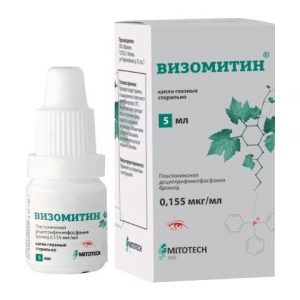Description
Description
A clear, colorless, or light yellow solution.
Latin name
CIPROLET
Release form
Ciprolet. Eye drops
Packing
5 ml – plastic dropper bottle (1) – packs of cardboard.
Pharmacological action of
Pharmacodynamics of
Broad-spectrum antimicrobial derivative of fluoroquinolone,
suppresses bacterial DNA gyrase (topoisomerase II and IV, responsible for the supercoiling of chromosomal DNA around nuclear RNA, which is necessary for reading) the growth and division of
bacteria causes pronounced morphological changes (including cell walls and membranes) and the rapid death of a bacterial cell.
It acts bactericidal on gram-negative organisms during dormancy and division (since it affects not only DNA gyrase, but also causes cell wall lysis), it acts on gram-positive microorganisms only during the division period.
Low toxicity to macroorganism cells is explained by the absence of DNA gyrase in them.
While taking ciprofloxacin, there is no parallel development of resistance to other antibiotics that do not belong to the group of DNA gyrase inhibitors, which makes it highly effective against bacteria that are resistant,
for example, to aminoglycosides, penicillins, cephalosporins, tetracyclines and many others .
Gram-negative aerobic bacteria are sensitive to ciprofloxacin: enterobacteria (Escherichia coli, Salmonella spp., Shigella spp., Citrobacter spp., Klebsiella spp., Enterobacter spp., Proteus mirabilis, Proteus vulgaris, Serratia marcescens, Hafnia alvei,
Edwardsiella tarda, Providencia spp., Morganella morganii, Vibrio spp., Yersinia spp.),
and other gram-negative bacteria (Haemalomus pap. ,
Aeromonas spp., Pasteurella multocida, Plesiomonas shigelloides, Campylobacter jejuni, Neisseria spp.),
some intracellular pathogens – Legionella pneumophila, Brucella spp., Chlamydia bacterium bacterium tuberculosis, Mycobacterium tuberculosis : Staphylococcus spp. (Staphylococcus aureus, Staphylococcus haemolyticus, Staphylococcus hominis,
Staphylococcus saprophyticus), Streptococcus spp. (Streptococcus pyogenes, Streptococcus agalactiae).
Most methicillin-resistant staphylococci are also resistant to ciprofloxacin.
The sensitivity of Streptococcus pneumoniae, Enterococcus faecalis, Mycobacterium avium (located intracellularly) is moderate (high concentrations are required to suppress them).
Resistant to the drug: Bacteroides fragilis, Pseudomonas cepacia, Pseudomonas maltophilia, Ureaplasma urealyticum, Clostridium difficile, Nocardia asteroides. Not effective against Treponema pallidum.
Resistance develops extremely slowly, because, on the one hand,
after the action of ciprofloxacin practically does not remain persistent microorganisms, and on the other hand, bacterial cells have no enzymes that inactivate it.
Pharmacokinetics
The maximum concentration of the drug (Cmax) in plasma when using eye drops is less than 5 ng / ml.
Average concentration – below 2.5 ng / ml.
After instillation, systemic absorption of the drug is possible.
The drug is excreted through the kidneys mainly unchanged (50%) as metabolites (up to 10%),
about 15% is excreted through the intestines,
passes into breast milk in nursing mothers.
Indications
Local treatment of various infectious diseases of the eye and its appendages caused by bacteria sensitive to the drug: acute and subacute conjunctivitis, blepharoconjunctivitis, blepharitis, bacterial corneal ulcers, bacterial keratitis and keratoconjunctivitis, chronic dacryocystitis and meibomyitis.
Preoperative prophylaxis in ophthalmic surgery.
Treatment of postoperative infectious complications.
Treatment and prevention of infectious eye complications after injuries or foreign bodies.
Contraindications
Hypersensitivity to ciprofloxacin and other quinolone drugs, viral keratitis, pregnancy,
lactation (breastfeeding), children (up to 1 year).
Use with caution in patients with cerebral arteriosclerosis,
cerebrovascular accident, convulsive syndrome.
Use during pregnancy and lactation
The use of the drug Ciprolet® during pregnancy and during lactation (breastfeeding) is contraindicated.
Special instructions
Eye drops can only be used topically, you can not enter the drug subjunctively or into the anterior chamber of the eye.
When applying Ciprolet ® eye drops and other ophthalmic solutions, the interval between their administration should be
for at least 5 minutes.
Wearing contact lenses is not recommended during treatment with the drug.
For patients who temporarily lose their vision after application,
is not recommended to drive a car or work with sophisticated equipment,
or with any sophisticated equipment that requires clear vision immediately after instillation of the drug.
Composition of
In 1 ml of solution contains: Active ingredient:
ciprofloxacin hydrochloride
(equivalent to 3.0 mg of ciprofloxacin) – 3.49 mg.
Excipients: disodium edetate 0.50 mg,
sodium chloride 9.00 mg,
benzalkonium chloride 50% solution 0.0002 ml,
hydrochloric acid 0.000034 ml,
water for injection up to 1.0 ml.
Dosage and Administration
Topically. In case of a mild or moderately severe infection, 1-2 drops are instilled into the conjunctival sac of the affected eye every 4 hours,
in severe infections – 2 drops every hour. After improvement, the dose and frequency of instillations are reduced.
In case of bacterial corneal ulcer: 1 drop every 15 minutes for 6 hours, then 1 drop every 30 minutes during wakefulness
for 2 days – 1 drop every hour during wakeful hours from 3 to 14 days – 1 drop every 4 hours during waking hours.
If epithelization has not occurred after 14 days of therapy, treatment can be continued.
Side effects
Allergic reactions, itching, burning, mild tenderness and hyperemia of the conjunctiva, nausea, rarely – swelling of the eyelids, photophobia,
tearing, feeling of a foreign body in the eyes, unpleasant soreness
appearance of white crystalline precipitate in patients with corneal ulcer, keratitis, keratopathy,
corneal infiltration, development of superinfection.
Drug Interaction
When combined with the drug Ciprolet with other antimicrobial agents (beta-lactam antibiotics, aminoglycosides, clindamycin, metronidazole), synergism is usually observed.
Ciprolet can be successfully used in combination with azlocillin and ceftazidime for infections caused by Pseudomonas spp.
with meslocillin, azlocillin and other beta-lactam antibiotics – with streptococcal infections
with isoxazolpenicillins and vancomycin – with staphylococcal infections
with metronidazole and clindamycin
Pharmaceutical Interaction
A solution of ciprofloxacin is pharmaceutically incompatible with drugs with a pH value of 3-4,
which is physically or chemically unstable.
Overdose
There are no data on overdose of the drug Ciprolet when applied topically.
Symptoms: in case of accidental ingestion of the drug, specific symptoms are absent.
Possible occurrence of nausea, vomiting, diarrhea, headache, fainting, feelings of anxiety.
Treatment: standard emergency measures, adequate fluid intake,
create an acidic urine reaction to prevent crystalluria.
Storage conditions
In a dark place at a temperature not exceeding 25 C.
Do not freeze.
Keep out of the reach and sight of children!
Expiration
2 years.
Use the drug for 1 month after opening the vial.
Do not use after the expiry date stated on the package.
Active ingredient
Ciprofloxacin
